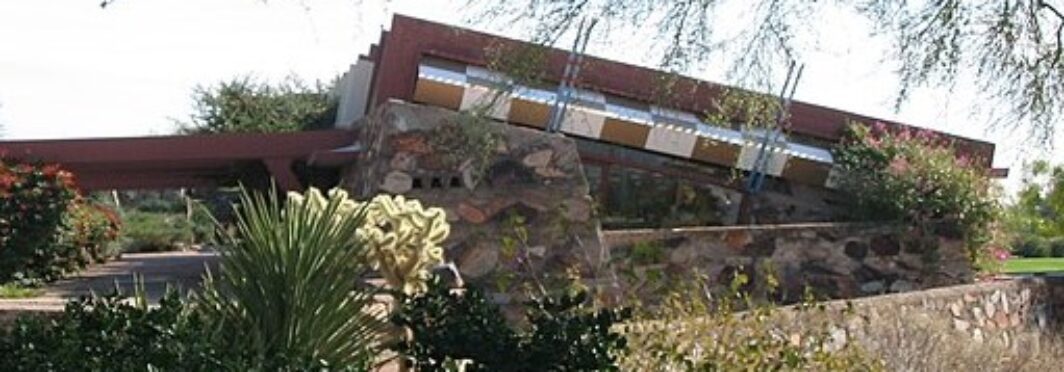“You have to go see Frank Lloyd Wright’s Taliesin West,” my brother insisted before I flew to Phoenix last weekend to attend a fundraiser featuring my writing coach client Barbara Hinske.
The city’s Foundation for Blind Children had provided the inspiration and the research for Barb’s series, Guiding Emily. Now, it was throwing a fundraiser featuring an intimate evening with Barb to celebrate the film based on the series’ first novel, which Hallmark had acquired and just aired, and I just had to be there. I also, it seemed, had to visit Frank Lloyd Wright’s desert masterpiece.
The morning before Barb’s event, I got together with a dear friend to pay tribute to Frank Lloyd Wright and visit Taliesin West. The architectural marvel makes its unique statement through the use of repetition, compression vs. release, and an organic approach to architecture, techniques that can absolutely be applied to writing with the same powerful effect.
Let’s start with the overall approach. Frank Lloyd Wright’s approach to architecture considers not just the building, but the entire site itself so that one is seamlessly integrated into the other. That includes how light moves during the day.
Windows are positioned to provide a multitude of perspectives and bring the outside in.
Deliberately small entryways propel the visitor to large, bright open spaces with outside views, which, in contrast, feel even more expansive. “Frank Lloyd Wright designed spaces for us to inhabit, not just rooms, and he moves us through them very intentionally,” says the guide on the audio tour. To appreciate them, you have to look at each space from every possible angle since “every spot has multiple viewpoints.”
Frank Lloyd Wright intentionally repeated shapes. The Prow Pool triangle, which echoes the shape of the mountains behind it, reoccurs in the angle of the buildings’ roofs, in the windows, in the architectural detail. The washes in the mountains that frame the site, caused by cascading water, are echoed in the channels between the beams of the building below. The pyramided steps that lead to the living structure show up again in the tiered shelves in the Kiva, which was also used as the media room, and in the Cabaret.
Each room has been designed with the participant’s experience in mind, so that as the space unfolds before you the view you’re treated to changes as well.
And on it goes.
Do you see parallels with Frank Lloyd Wright’s architectural design and writing the way I do? I’d love to know what strikes you.



Nice